Description
Achilles Germain
From Wikipedia.fr, translation by Google
Achille Germain was a former professional cyclist born on Mayn Beaupréau and died on at La Fleche. He was a professional from 1908 to 1914 and was nicknamed “Germain de la Flèche”.
Biography
Beginnings in cycling
The family of Achille Germain, born in Beaupréau on , moved to La Flèche, in the department of Sarthe, when he was still very young 1 . His beginnings in cycling are quite modest. He participated in his first events in his adopted city during the races of Julyon the Promenade du Pré and notably finished second in the premium race 2 . The following year, he joined the newly created Union vélocipédique fléchoise (UVF), and during this same meeting of the July, placed second in the sprint final and third in the bounty race. Septemberollowing, he took second place in the 100 kilometer event of the Coupe de l’ UVF behind Manceau Mareau, a member of the Union Auto-Cycliste de la Sarthe 2 .
At that time and like many runners, Achille Germain participated in both road and track events. On , when the Fléchois velodrome on rue Belleborde opened, he obtained his first victory by winning the middle-distance race, which he won with a half-lap lead over his competitors. The same day, he reached the final of the speed test in which he was narrowly beaten by the Le Mans runner Tubières. From then on, he obtained a series of good results on the Fléchoise track, notably ranking third in the departmental championship then in the La Flèche championship in June, or even fourth in the regional final won the following month by the Nantes rider Hardy 3 . THE, Germain achieved a prestigious success on the track of the Buffalo velodrome in Neuilly by clearly dominating the 10 kilometer bonus race. During the event, he won the last five of the ten intermediate sprints, each time pocketing the bonus of ten francs 4 . Returning to La Flèche in September, he took second place in the UVF speed championship behind his club mate Albert Leroy, who had just taken part in the Tour de France 3 .
Professional runner
In 1905, Achille Germain, now a 3 rd category professional rider, established himself as one of the best cyclists in his region. On March, at La Flèche, he won both the speed test, the 45 lap test behind a motorcycle and the premium race, a dominance which he again exerted the Aprilby winning the departmental speed championship, the 25 km middle-distance race and the prize race 3 on the same track . His results during the summer were more discreet, but Germain obtained two new successes in September, the Grand Prix de Tours on the 9th then the Grand Prix de Montluçon the next day, each time in the middle-distance event . He also distinguished himself in more modest competitions, such as the 4 kilometer cantonal race which he won at Verron at the beginning of October 5 . While the Pinder circus is passing through La Flèche, Achille Germain tries his luck with several Fléchois amateurs on the “Canadian track” , a construction 6.5 meters in diameter, made up of wooden bars spaced ten centimeters apart and inclined at 75 degrees. After a first unsuccessful attempt, he achieves the best performance of the participants by completing eight laps of the track 6 .
During the winter of 1905-1906, Achille Germain trained on the track of the Vélodrome d’Hiver in Paris , alongside the best specialists of the time. He can then see the gap that still separates him from the main riders but his stubbornness in training is noticed. He was chosen with Georges Parent to join the team of coaches of Henri Cornet , winner of the 1904 Tour de France, in the match of 50 kilometers behind tandems which opposes him to Karl Ingold. The victory was clear: Cornet won with a nine-lap lead. As an individual, Germain stands out in the 15 kilometer race behind motorcycles and Anton Jaeck, his attacking behavior throughout the race was praised by the spectators 7 . February, he is associated with the Dane Axel Hansen on the American Twelve Hours event, in which the two competitors take turns at will. At the end of the twelve hours, fourteen teams are still ranked in the same lap: victory is therefore decided over six laps between the best sprinters of each formation. Hansen initially finished fourth, but the stewards were slow to validate the results after a crash occurred on the last lap. The event is finally canceled 7 . , a meeting brings together several renowned riders on the La Flèche velodrome . At home, Achille Germain took third place in the bounty race behind Charles Vanoni and Victor Thuau , then lost 10 kilometers behind a motorcycle to César Simar , Olympic medalist two years earlier 8 .
The outdoor season brings many successes to Achille Germain. On April, he won at La Flèche the 15 kilometers behind motorcycles ahead of Arthur Pasquier , then set the new track record over 10 kilometers. The following week, in Tours , he won the 50 kilometers behind motorcycles, still ahead of Pasquier, then shared the victory with Jean Gougoltz in the Grand Prix du Conseil Général in Nantes on . In this respect, his performances attracted the goodwill of the newspaper L’Auto : “The middle-distance race returned very easily to the Fléchois star, Germain. This guy is about to play the big roles. » 8 The , he discovered the track of the Parc des Princes and took third place in the 30 kilometers behind Antoine Dussot and Henri Lautier, which earned him selection by the organizers of the Grand Prix de Paris . Thanks to the financial help of the viscount of Lesseville, leader of the Union vélocipédique fléchoise, he was able to employ several coaches to compete in the race over an hour behind tandems. Opposed to two of the best cyclists of that time, Henri Cornet and René Pottier , he was largely beaten but as on each of his outings, his attitude was widely praised by the specialists, and Germain became one of the riders most appreciated by the public. 9. At the beginning of July, he failed in his attempt to break the world record for the 10 kilometers without trainers, held by Lucien Petit-Breton , but a few days later he achieved clear success over 15 kilometers behind motorcycles at the Vélodrome Buffalo 9 . THE, at La Flèche , in front of an audience fully committed to his cause, he won two of the three events organized and won the general classification 9 . At the end of August, he was the only one to stand up to César Simar over 30 kilometers at the Buffalo, then he clearly dominated Émile Bouhours over the same distance at Tours at the beginning of September 10 .
Achille Germain then participated in the Six Days of Toulouse , the first race of its kind in Europe, contested at the Bazacle Velodrome where he was associated with local rider Jean Gauban . The duo obtained a promising second place there, only beaten by the brothers Émile and Léon Georget . Throughout the race, the Fléchois runner showed intense activity and won numerous prizes, including those for the 47th and 49th hours 11 , 12 .
Upon his return, Achille Germain was greeted triumphantly at La Flèche where he wished to spend a few days before returning to Toul where he was to perform his military service in the 153rd infantry regiment 13 , 14 . He rarely obtained permissions but still managed to compete in a few races in 1907: beaten by Arthur Pasquier over 40 kilometers at Tours on , he took his revenge and beat him the week later at La Flèche on the occasion of the Grand Prix du Printemps 14 .
From the Tour de France to the Six Days of New York
Released from military service on , Achille Germain now wants to focus more on road events and plans to start Paris-Roubaix, but he finally has to give it up. On the La Flèche velodrome track, at the beginning of April, he won the Sarthe speed championship and then took second place in the Grand Prix du Printemps behind Pasquier. Germain usually stays in Paris to train but he returns home in May to compete in a 12-hour race which he wins quite clearly with 16 laps ahead of his nearest pursuer. A few days later, he was second in the Grand Prix d’Angers over 40 kilometers with coaches and announced his commitment to the Tour de France 15 ,16 . It is the only one in which he participated during his career 15 . His beginnings in the race were difficult: he only obtained a 22nd place at best during the fifth stage Lyon-Grenoble and advanced to 25th place in the general classification on the evening of the sixth stage in Nice . However, the race conditions are very tough at the start of the Tour and only 45 of the 114 entered are still in the running. His results are then more convincing: 19th in Nîmes and 15th in Toulouse, he ranks 17th in Bayonne and especially 8thin Bordeaux, at the end of a stage during which he did not leave the wheel of the leading men. Achille Germain finished his Tour with three 12th places and a 14th place and finally finished 16th in the event with 236 points, 200 points behind the winner Lucien Petit-Breton . This encouraging participation earned him the congratulations of many specialists like the journalist of L’Auto Charles Ravaud who considers that Germain is able to obtain excellent results if he chooses to devote himself even more to Route 17 .. His participation in the Grande Boucle further boosted his popularity: he was carried in triumph on his return to La Flèche station and welcomed into town by more than 2,000 people 1 .
In October, Achille Germain married in La Flèche with Suzanne Bruon, the daughter of a grocer’s couple from the Place du Marché-au-Blé 1 , 18 . At rest during the winter, it makes its return onat the velodrome of this city and retains his title of champion of the Sarthe speed. Beaten at Angers by Daniel Lavalade over 40 kilometers behind motorcycles, he distinguished himself at the end of May on the road by taking second place in the Circuit de la Loire, run over two stages, having won the first at Loudun. Invited to start the eighth stage of the Wolber Grand Prix, organized by Peugeot on Junebetween Paris and La Flèche, Achille Germain ranks sixth and acquires, according to L’Auto , “his stripes as a long-distance trucker” . Also invited to the ninth stage towards Nantes, he finished fourth there before being downgraded for a course error 18 . During the summer, he did not enter the Tour de France and instead competed in a whole series of very lucrative track races. Forced to retire in Marseille over a 24-hour race, he was associated with Bouteiller over 12 hours in Toulouse and took second place after a tough fight against Jean-Baptiste Dortignacq 18 . In September, he is one of the main favorites of the Bol d’Or, raced on the Buffalo Velodrome track. In the lead after the first four hours of racing, contested without coaches, he then experienced a serious breakdown and lost contact to be in seventh and last place after seven hours. In the last quarter of the race, Achille Germain overtook two competitors to finally rank fifth in the race. Having traveled 681.6 kilometres, he finished well behind the triple winner Léon Georget . Germain made his return to the road at the end of September by committing to Paris-Tours but his result, 18th , was anecdotal 19 . His last outings of the year on the track were hardly conclusive, like his two attempts a thour record without a trainer at La Flèche 19 .
He was however selected to participate in the beginning of December in the Six Days of New York , one of the most famous races in the world, being associated with the British runner Reginald Shirley. From the 50th minute of the race, this one causes a heavy fall by passing the baton to Germain, who is hit in the right leg. The duo quickly concedes a lap behind the other teams and fails to regain it despite Germain’s efforts. At the end of the first day of racing, Shirley, suffering from stomach aches, gave up. Achille Germain is then associated with the Italian Egisto Carapezzi whose partner has also been forced to withdraw. In accordance with the regulations, the new crew then receives a penalty lap, but this is nothing compared to those that Carapezzi regularly concedes during his stints. The duo are 21 laps behind after 34 hours of racing. Redoubled efforts to overcome their backwardness, the two men experienced a failure at the same time and interrupted their race for two hours. Exhausted on the fifth day, Carapezzi retired and despite Achille Germain’s desire to continue the race, the judges considered that he was too late to continue, his delay then amounting to nearly 900 laps.20 .
Middle distance specialist
At the beginning of 1910, Achille Germain once again gave priority to the track, but if his results at the local level were convincing, he struggled to confirm in the major Parisian events. In May, he nevertheless competed in the French road championship, run with coaches. Dropped from the first kilometers, he finally ranks tenth. After a detour by the track and a success in Brest over 25 kilometers at the expense of César Simar, he returned to the road to take tenth place in Paris-Le Mans. During the summer, Achille Germain obtains several places of honor on the velodromes, notably ranking second in the Grand Prix for the inauguration of the Angers velodrome, the Challenge Cointreau in the same city, as well as the Eight hours of Tours, this which earned him his selection for the Bol d’Or . Manhandled by the rhythm imposed by Léon Georget and ill, he retired shortly after halfway. Like the previous year, he was selected to take part in the Six Days of New York , this time associated with the Belgian Verlinden. The two men never found the rhythm and retired after only eight hours of racing 21 .
In the month of, Achille Germain opened a repair shop for bicycles of all brands in his town of La Flèche 1 . At the same time, he was hired by the JB Louvet team to race on the road, but after having retired from Paris-Tours , he gave up on Paris-Roubaix , preferring to line up for a track event in Angers. At the same time, he also became a race organizer by setting up the Jean-Baptiste Louvet Grand Prix at La Flèche on May. The course of this 130-kilometer road event crisscrosses the roads of the region, notably passing through Le Lude and Baugé , while the race is open only to members of the Union Vélocipédique de France 1 . After several successes in the middle distance in Angers then Nantes, in particular at the expense of the American Woody Hedspath, he returned to the road during Paris-Brest-Paris in the category of road tourists. A fall before Rennes destroys his bike and Germain walks the 14 kilometers that separate him from the city. Unable to repair it, he gives up. Its winter season begins with several places of honor but it is the December, at the Vélodrome d’Hiver, that Achille Germain won a convincing success in the Prix Robl. This middle-distance race, run over 25 kilometers, is organized in tribute to the German champion Thaddäus Robl , who died in a plane crash. He was also often employed as a trainer in races behind tandems, such as the Prix de Madison Square at the beginning of the following January in which the American Joe Fogler partly owed him victory 22 .
During the 1912 season, Achille Germain devoted himself almost exclusively to the middle distance . He accumulates successes, in Rouen, Paris or Angers, but mainly against second-tier opponents. On June, on the Parc des Princes track, he took fourth place in the French middle-distance championship, run over 100 kilometers, clocking in fifteen laps behind the winner Paul Guignard and seven laps from the podium. A week later, in Nantes, he finally won against worthy opponents, namely Émile Bouhours and César Simar, in a 50-kilometer race. In August, he placed third in the Critérium de demi-fond at the Buffalo, then won the Le Mans meeting two days later at the Jacobins Velodrome. September, he experienced a severe setback in the French Grand Prix at the Parc de Princes, failing to make it through the heats, but returned to center stage at the end of the year by obtaining a convincing victory in the Prix Stocks, raced 40 kilometers at the Vélodrome d’Hiver. The Danish rider Herman Kjeldsen is the only one to stand up to him in this event, but Germain is the strongest and displays a radiant form which earns him to be selected for the first Six Days of Paris, scheduled for the month of January23 .
The start is given on January 13 at the Vel’ d’hiv’ track and during the first two days, Achille Germain, associated with Édouard Léonard , animated the race by constantly placing himself at the head of the peloton, but the two riders began to lose contact after the 50th hour race. The final classification of the duo, ninth six laps behind the winners, is anecdotal, but Germain and Léonard are among those who won the most bonuses during the event 24 . At the end of the event, Achille Germain’s popularity grew again, which enabled him to negotiate upwards for his participation in the various meetings organized on the velodromes. After successes in Angers in March, he made a strong impression on Aprilwinning a 30 kilometer ahead of Daniel Lavalade and César Simar at the Buffalo . A journalist from L’Auto declared: “The middle-distance race has come down to the runner with courage personified. I named Achille Germain. ” Considered an outsider for the French middle distance championship, he took fourth place there, quite far from the winner Paul Guignard . At the Grand Prix de Paris, he took second place in the 50 kilometer, well ahead of Georges Sérès but containing the return of several renowned runners. At the end of the season, another place of honor is to be put to his credit, with second place in the closing Grand Prix ofRoubaix 25 .
As the previous year, Achille Germain is associated with Édouard Léonard for the Six Days of Paris , from January. After the latter retired on the second day of racing, Germain formed a new team with Charles Meurger, and was two laps behind the leaders. Le Fléchois keeps the duo afloat but Meurger, more of a sprint specialist, concedes laps behind and ends up giving up after the 61st hour. Germain continued the race with a third teammate, Alfred Beyl , but it was his turn to retire after 102 hours and having won numerous bonuses 26 . Author of fine performances at meetings in Paris and a great success at the Grand Prix du Printemps de Limoges, he obtained the best result of his career at the French middle-distance championship, the July27 .
End of career and retraining
A few days later, the First World War broke out and Achille Germain, like his competitors, was mobilized. He was assigned as a cycle corporal to the 317th Infantry Regiment , responsible for transporting mail by bicycle. During the war, he nevertheless participated in certain races according to his permission. So the November, he performs at the Vélodrome d’Hiver for an American-style 400-lap event. Alongside Marius Chocque, he ranks tenth. In December, he won the Prix de la Capitale over 30 kilometers. The following year, he won the Prix d’Avril in middle distance at the Vel’ d’Hiv’ , then beat a Belgian runner in a middle-distance match organized at the Beaulieu velodrome in Mans 28 . He was demobilized at the beginning of 1919 and resumed competition more intensively. Third in the Trophée de Paris over an hour in May, he won the Julythe Middle Distance Grand Handicap at the Parc des Princes . While he seems in full possession of his faculties, however, he must put an end to his career because of a groin injury, contracted during the war and which eventually reopened 28 , 29 .
Achille Germain then retired to La Flèche , initially to take care of his cycle repair shop. Very involved in local life, he invited his friend Robert Spears , world track speed champion, to lay a wreath at the cemetery on the occasion of the commemoration of the armistice on November. Anxious to pay tribute to veterans of the Great War, in 1922 he inaugurated a commemorative plaque affixed to the birthplace of the aviator Charles Godefroy , who had made himself famous by his flight under the Arc de Triomphe in Paris on August. Two years later, a Poilus banquet was organized on his initiative in the ballroom of the Hôtel du Cheval Blanc. On this occasion, he donated one of his racing bikes to the winner of a raffle organized for the benefit of Veterans Affairs 30 . Achille Germain was then elected vice-president of the city’s Festival Committee in March31 .
At the same time, Achille Germain does not give up the sport of cycling. In 1920, he officiated as a motorcycle trainer for the Tunisian Ali Neffati 29 . The same year, he was one of the creators of a new multi-sports club in his town, “La Flèche-Sportive” . Among other achievements, this club notably organizes a road race, the Paris-La Flèche, which has three consecutive editions 32 . At the same time, he was directly involved in the construction of a new stadium-velodrome at La Flèche , intended to replace that of Belleborde. After several months of negotiation, this one is carried out on a ground adjoining the road of Angers, and finally inaugurated in Novemberon the occasion of a football match, while the track was built at the beginning of 1922 thanks to the help of several great champions such as Robert Spears, Oscar Egg , Maurice Brocco , the aviator Georges Kirsch or the boxer Georges Carpentier 29 . In 1925, Achille Germain set up the restaurant-dancing hall Printania opposite the new stadium, which quickly became one of the most popular entertainment venues in the city 33 .
In, Achille Germain is standing in the partial municipal elections of La Flèche as an independent Republican candidate. By obtaining 1,111 votes, the best total, he is one of the five new elected members of the municipal council. Re-elected in, still under the independent label, he sat there until his death three years later. Achille Germain also stood as a candidate in the legislative elections of 1932 . With 4,108 votes, he came third, more than 5,600 votes behind the radical candidate Jean Montigny , re-elected in this first round 34 . Hospitalized, Achille Germain dies on, at the age of 54, and his body is buried in the Saint-Thomas cemetery. On May, the municipal council of La Flèche gives its name to the street of a newly built subdivision 35 .
*****************************
All of the postal cards on our site are original, with no reproductions.
As many of the cards are quite old and one-of-a-kind, please look carefully a the photos to determine their condition.
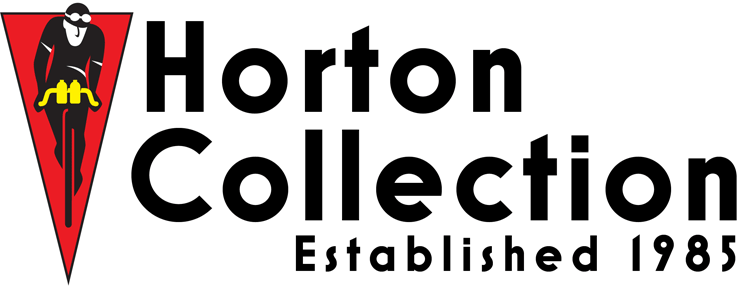

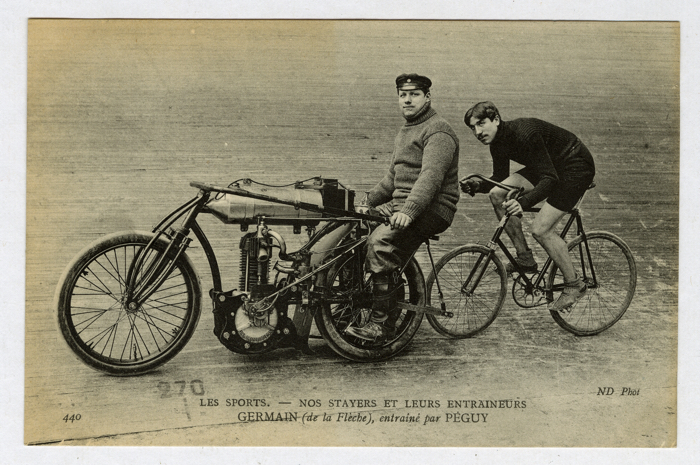
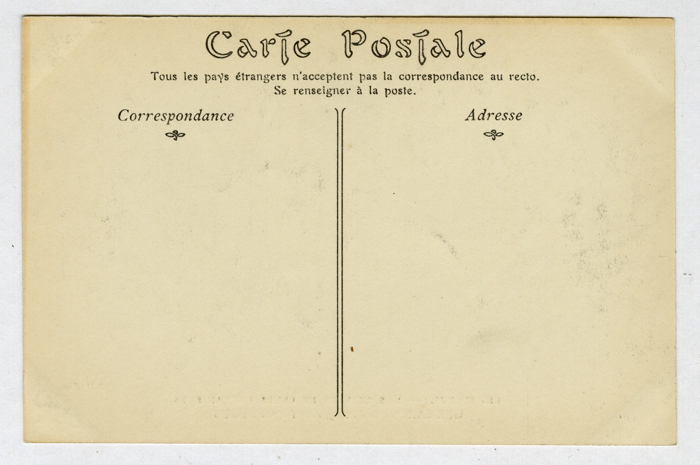
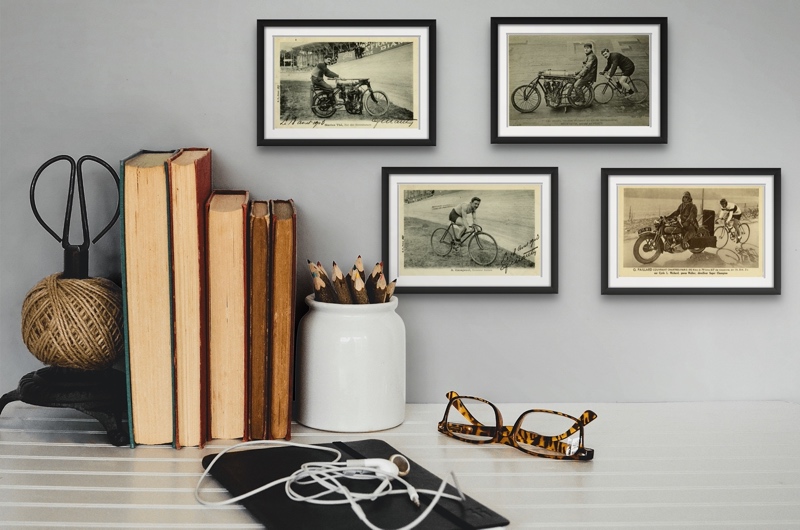
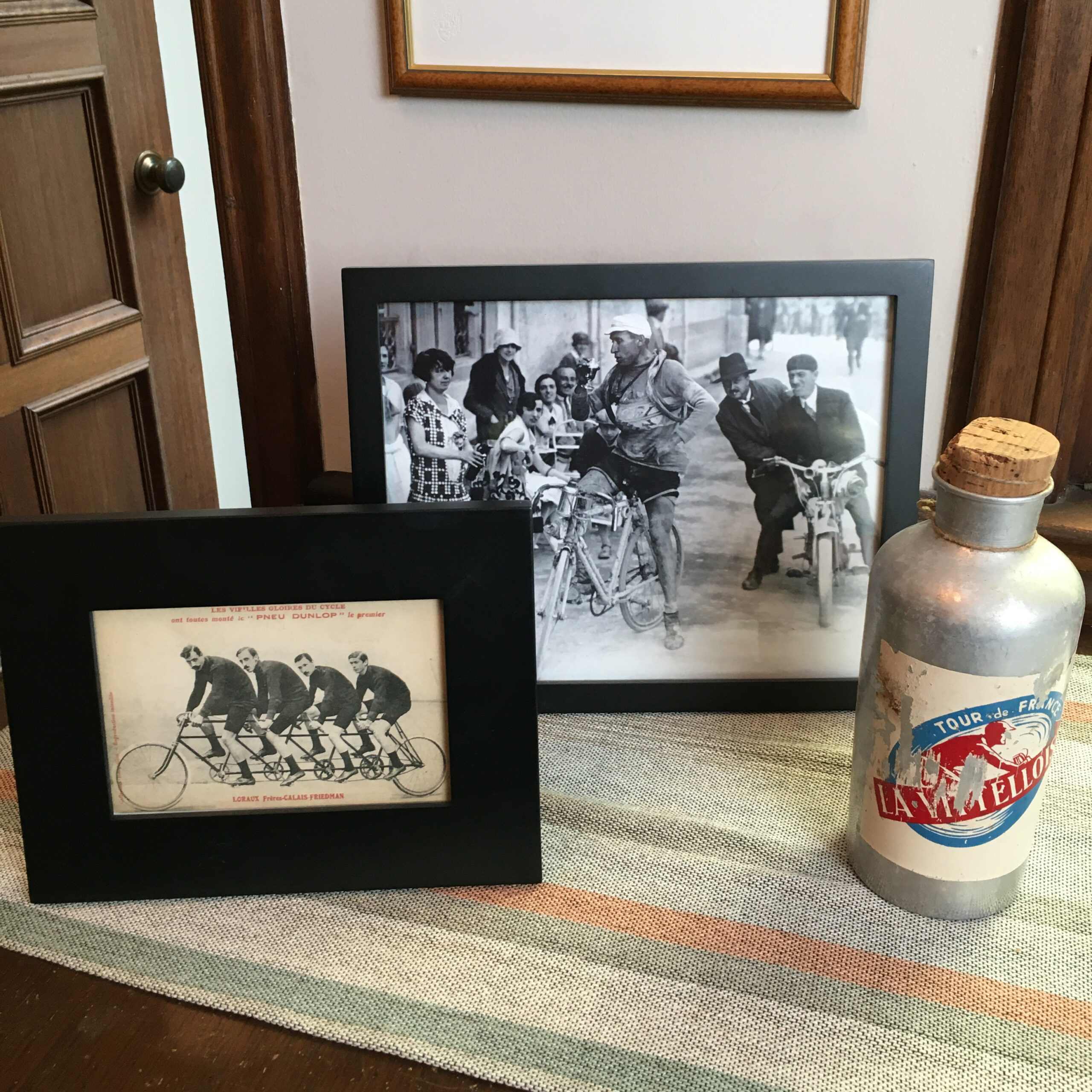
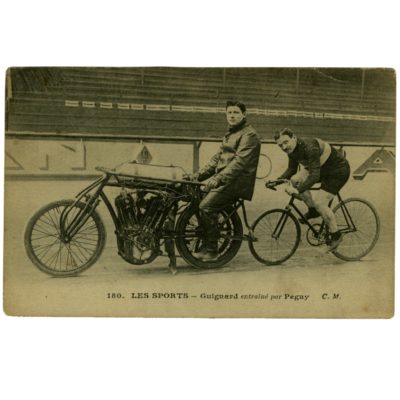
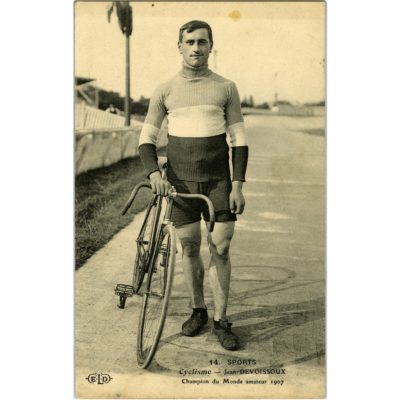
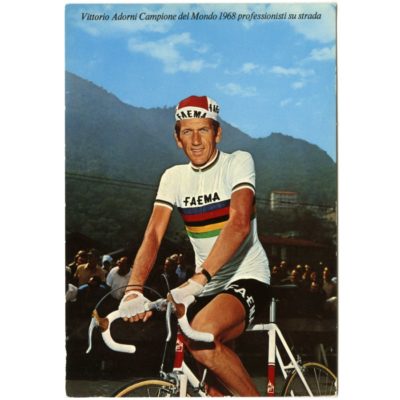
Recent Comments